Emergency dentistry
What has to be done in cases of dental injuries?
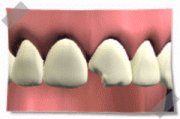
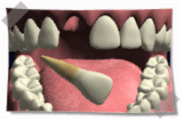
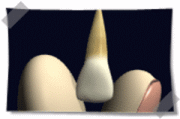
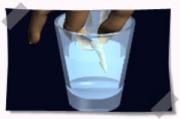
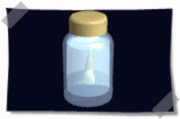
Dental trauma is extremely common. Children are particularly affected, with one third of five year olds having suffered injury to their primary teeth, and one fourth of 12 year olds having suffered injury to their permanent teeth. Injuries to teeth and their supporting structures can be classified as fractures, lateral or extrusive luxation (loosening and displacement of the tooth), intrusion (displacement of the tooth vertically into the alveolar bone), and avulsion (complete displacement of the tooth out of its socket)
The mechanism of injury and timeline are particularly important aspects of the history because they define the risk of associated injuries and available treatment options. Examination should focus on related soft tissue injuries and the need for suturing, signs of tooth loosening, displacement or fracture, and disturbance in the bite or other signs of alveolar fracture. Complete diagnosis requires at least one dental radiograph in all cases.
All patients with traumatized teeth ultimately need follow-up with a dentist for complete diagnosis and long-term care. Long-term sequelae can include pulp death, root resorption, and displacement or developmental defects of permanent tooth successors.
|
|||||||||
Tooth fractures may involve the crown, the root, or both, with or without exposure of the pulp. Fractures limited to the enamel and small amounts of dentine that are not sensitive may not require immediate treatment but should be checked by a dentist. Fractures exposing the pulp are often painful, and patients with this condition require timely referral to a dentist. Tooth fragments should be kept hydrated as they could possibly be reattached. Definitive treatment may involve root canal therapy or extraction.
Fractures of the root usually require a radiograph for detection unless the tooth is particularly loose and the fracture occurred close to the gingival margin. Treatment may involve root canal therapy, splinting, or extraction, depending on the exact nature of the root fracture.
Teeth subject to lateral or extrusive luxation have been displaced and are loose. In the primary dentition, if the traumatized teeth are so loose that they are in danger of being aspirated or if they interfere with normal occlusion, immediate referral to a dentist for extraction is required.12 Luxated permanent teeth require dental referral for repositioning, splinting, or root canal therapy, along with long-term follow-up.13 Any luxated tooth that interferes with normal occlusion requires immediate dental evaluation and treatment to avoid pain and further complications.
Teeth subject to intrusive luxation have been intruded into the alveolar bone, which may occur to the point that the teeth are not visible. With regard to injuries to the primary dentition, dental referral is required for monitoring to determine if the teeth will re-erupt. For injuries to the permanent teeth, dental referral is required for monitoring or treatment to promote re-eruption (surgical or orthodontic), often coupled with root canal therapy.13
|
|||||||||
Avulsed teeth are a true dental emergency. Primary teeth are never reimplanted. In the case of permanent teeth, time is of the essence. Immediate on-scene reimplantation is the preferred method of treatment. If the tooth is visibly contaminated, it should be gently rinsed in cold running tap water and then reimplanted. Care should be taken not to touch, rub, or clean the root, which could remove periodontal ligament fibers and reduce the chance of successful reimplantation. The patient should then see a dentist immediately for splinting and antibiotic prophylaxis.
If immediate on-scene reimplantation is not possible, the tooth should be transported in the patient’s buccal sulcus, milk, or a specialized tooth transport container to the physician’s or dentist’s office. The tooth should then be immediately reimplanted. If rinsing is required, normal saline should be used, and any clot present in the socket should be flushed out before reimplantation.
Antibiotic prophylaxis with penicillin should be prescribed, tetanus vaccine should be administered if the patient has not received it in the past five years, and the patient should be immediately referred to a dentist for splinting and further therapy. Avulsed teeth that have not been managed in an appropriate and timely fashion should not be discarded. Alternative, but less optimal, treatments are available
What has to be done in those cases?
- Chipped or broken teeth. Save any pieces. Rinse the mouth using warm water; rinse any broken pieces. If there’s bleeding, apply a piece of gauze to the area for about 10 minutes or until the bleeding stops. Apply a cold compress to the outside of the mouth, cheek, or lip near the broken/chipped tooth to keep any swelling down and relieve pain. See your dentist as soon as possible.
- Knocked-out tooth. Retrieve the tooth, hold it by the crown (the part that is usually exposed in the mouth), and rinse off the tooth root with water if it’s dirty. Do not scrub it or remove any attached tissue fragments. If possible, try to put the tooth back in place. Make sure it’s facing the right way. Never force it into the socket. If it’s not possible to reinsert the tooth in the socket, put the tooth in a small container of milk (or cup of water that contains a pinch of table salt, if milk is not available) or a product containing cell growth medium, such as Save-a-Tooth. In all cases, see your dentist as quickly as possible. Knocked out teeth with the highest chances of being saved are those seen by the dentist and returned to their socket within 1 hour of being knocked out.
- Extruded (partially dislodged) tooth. See your dentist right away. Until you reach your dentist’s office, to relieve pain, apply a cold compress to the outside of the mouth or cheek in the affected area. Take an over-the-counter pain reliever if needed.
 Toothache and its treatment
Toothache and its treatment
A toothache is a pain in or around a tooth that may be caused by:
- Tooth decay
- Abscessed tooth
- Tooth fracture
- A damaged filling
- Repetitive motions, such as chewing gum or grinding teeth
- Infected gums
- Sinusitis
- Symptoms of a toothache may include:
- Tooth pain that may be sharp, throbbing, or constant. In some people, pain results only when pressure is applied to the tooth.
- Swelling around the tooth
- Fever or headache
- Foul-tasting drainage from the infected tooth
When Should I See a Dentist About a Toothache?
See your dentist as soon as possible about your toothache if:
- You have a toothache that lasts longer than 1 or 2 days
- Your toothache is severe
- You have a fever, earache, or pain upon opening your mouth wide
Proper identification and treatment of dental infections is important to prevent its spread to other parts of the face and skull and possibly even to the bloodstream.
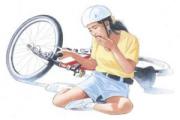 What Happens When I Go to the Dentist for a Toothache?
What Happens When I Go to the Dentist for a Toothache?To treat your toothache, your dentist will first obtain your medical history and conduct a physical exam. He or she will ask you questions about the pain, such as when the pain started, how severe it is, where the pain is located, what makes the pain worse, and what makes it better. Your dentist will examine your mouth, teeth, gums, jaws, tongue, throat, sinuses, ears, nose, and neck. X-rays may be taken as well as other tests, depending on what your dentist suspects is causing your toothache.
What Treatments Are Available for a Toothache?
Treatment for a toothache depends on the cause. If a cavity is causing the toothache, your dentist will fill the cavity or possibly extract the tooth, if necessary. A root canal might need to be done if the cause of the toothache is determined to be an infection of the tooth’s nerve. Bacteria that have worked their way into the inner aspects of the tooth cause such an infection. An antibiotic may be prescribed if there is fever or swelling of the jaw. Phototherapy with a cold laser may be used to reduce the pain and inflammation associated with the toothache.
How Can Toothaches Be Prevented?
Since most toothaches are the result of tooth decay, following good oral hygiene practices can prevent toothaches. Good oral hygiene practices consist of brushing regularly with a fluoride-containing toothpaste, flossing once daily, and seeing your dentist twice a year for professional cleaning. In addition to these practices, eat foods low in sugar and ask your dentist about sealants and fluoride applications
Temporary Toothache Remedies
PAINKILLERS such as Ibuprofen (Nurofen) are good for toothaches, because it is anti-inflammatory as well. However, asthmatics are not supposed to take these, so try paracetamol or ask your chemist for an alternative. Children under 12 years old should avoid Asprin (Reye’s Syndrome), with liquid paracetamol (Calpol) a good alternative. Codeine (eg: Codamol) makes you drowsy, so unless you want to sleep better at night, don’t take during the day, otherwise you can’t drive safely, might hurt yourself, need someone to accompany you etc. Never exceed maximum recommended doses! This is dangerous and will not work any better than the recommended dosage would anyway!
OIL OF CLOVES is available from most Chemists/Pharmacies and is useful to apply on cotton wool on a tooth with a “live” nerve toothache. Keep pressed onto the tooth/cavity for a full minute. The helpful effect is only temporary though as it gets washed away by saliva easily.
TOPICAL ANAESTHETIC gel available at Pharmacies again. Useful for gum ulcers around wisdom teeth, loose baby teeth tugging painfully on a child’s gum, or soft tissue injuries and accidental bites. Not much good for teeth problems though as again it gets washed away by saliva.
ANTISEPTIC MOUTHWASH for gum infections around wisdom teeth, gum diseases and bleeding gums, multiple mouth ulcers etc.
Chlorhexidine (Corsodyl) is good but quickly stains teeth brown. Other good alternatives are Betadine, Eludril etc. Again, let it soak in for a full minute before spitting it out for maximum benefit – if this gives a burning sensation that cannot be tolerated for a full minute, then dilute with some water until it is only a mild sensation that you can tolerate for a full minute.
We tend to not recommend Listerine as it is often high in alcohol and shouldn’t be used for children and could fail a breathaliser test if stopped by the police!Most Supermarket own brands of “Antiseptic” labelled mouthwash are misleading in our opinion and if you read the contents they are often nothing more than a cheap version of a Fluoride (NaF) mouthwash, which is great to rinse with before bedtime on a daily basis to help prevent cavities, but fairly useless to help treat a mouth infection !
DIFFLAM spray (antiseptic and anti-inflammatory) is useful to spray on particular areas, such as wisdom teeth gum areas or into large cavities.
SALT MOUTHWASH is a natural antiseptic rinse and good for post-extraction healing, Denture rubs and mouth ulcers if you cannot get to a Chemist for a good antiseptic mouthwash mentioned above. A “teaspoon” of salt dissolved in a tumbler of warm water works well. Hold in the mouth for one minute then spit out, around 4 times daily or as needed.
ANTIBIOTICS only work for “dead” nerve abcesses and gum infections. They are essential for infection that causes swelling, but you need to see a Dentist or Doctor to prescribe these. You will still need Dental Treatment later as Antibiotics cannot get inside a dead tooth, so the infection will return worse if left untreated ! This is a common mistake: Tooth Abcesses nearly Always need dental treatment later if they are not to come back twice as bad!
AVOID the things that make toothache worse, so drink liquids through a straw, eat soft foods on the other comfortable side etc.DO NOT take Alcohol or additional Asprin (keep taking any prescribed medicine for heart or clotting problems), otherwise these will make you bleed even more, which is bad news if you need a tooth out later on. Choose a safer alternative, such as paracetamol or ibuprofen.
Remember, Codeine containing painkillers makes you more “drowsy”, so you shouldn’t drive, operate machinery, boil water etc, get someone else to help you if you take these – always read the labels for warnings and follow all instructions etc !
What has to be done at lip,tongue and cheek injuries?
- The injured site has to be cleaned with warm water.
- If there is bleeding a gauze tampon has to be applied.
- Cold compress from outside of the cheek and lip has to be applied.
- If the wound is too big and the bleeding doesn’t stop an emergency clinic or doctor has to be visited
 Mouthguards
MouthguardsTeens and adult weekend warriors experience thousands of injuries each year on the playing field, on the basketball court, while biking or skating, and during other activities. Injuries to the face in nearly every sport can harm your teeth, lips, cheeks and tongue.
A properly fitted mouthguard, or mouth protector, is an important piece of athletic gear that can protect your teeth and smile. You may have seen them used in contact sports, such as football, boxing, ice hockey, lacrosse and women’s field hockey.
Choosing a Mouthguard
There are three types of mouthguards:
- the ready-made, or stock, mouthguard;
- the mouth-formed “boil-and-bite” mouthguard;
- the custom-made mouthguard made by a dentist.
All properly fitted mouthguards provide varying degrees of protection. A custom-fitted mouthguard professionally made in the dental office can be tailored to the demands of the athlete and the sport.
The most effective mouthguard should have several features. It should be resilient, tear-resistant and comfortable. It also should fit properly, be durable and easy to clean, and not restrict your speech or breathing.
A mouthguard strap can be fastened to most types of mouthguards. The strap protects against loss and allows the mouthguard to be suspended from a face mask when the athlete is not in play.
Generally, a mouthguard covers only the upper teeth. If you have a protruding jaw, your dentist may recommend that your lower teeth also be covered.
Caring for Your Mouthguard
Before and after each use, rinse the mouthguard with cold water or with an antiseptic mouth rinse. You can clean it with toothpaste and a toothbrush, too. When it’s not being used, place your mouthguard in a firm, perforated container. This permits air circulation and helps prevent damage. Avoid high temperatures from sources such as hot water, hot surfaces or direct sunlight, which can distort the mouthguard.
Check it for tears and holes and to see whether it has become loose. A mouthguard that is torn or in bad shape can irritate your mouth and lessen the amount ofprotection it provides. Have regular dental checkups and bring your mouthguard along so the dentist can make sure it’s still in good condition.
What to do after tooth extractions?
- Small bledings after extractions are considered as normal.
- If there are severe bleedings you have to see an emergency clinic.
- If there is a blood leak the gauze tampon that is applied to the extraction socket has to be kept in place for aproximately 30 minutes at least.
- If the bleeding continous you have to apply to your dentist.If not possible wet a small tea bag wrap it with a gauze and apply with pressure.With minerals facilitating the clot formation in the tea leaves the bleeding will stop in half an hour.
- If the problem can not be solved please visit the an emergency clinic.
What To Expect After Surgery
In most cases, the recovery period lasts only a few days. The following will help speed recovery:
- Take painkillers as prescribed by your dentist or oral surgeon.
- After 24 hours, you can rinse your mouth gently with warm salt water several times a day to reduce swelling and relieve pain. Make your own salt water by mixing 1tsp (5g) of salt in a medium-sized glass [8fl oz] of warm water.
- Change gauze pads before they become soaked with blood.
- Relax after surgery. Physical activity may increase bleeding.
- Eat soft foods, such as gelatin, pudding, or a thin soup. Gradually add solid foods to your diet as healing progresses.
- Do not lie flat. This may prolong bleeding. Prop up your head with pillows.
- Avoid rubbing the area with your tongue.
- Continue to carefully brush your teeth and tongue.
